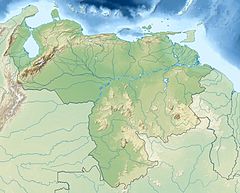| Guanipa River | |
|---|---|
 | |
| Location | |
| Country | Venezuela |
| Physical characteristics | |
| Mouth | |
• location | Gulf of Paria |
• coordinates | 10°02′38″N62°26′51″W / 10.04383°N 62.44754°W |
| Length | 340 km (210 mi) |
| Basin size | 1,100 sq mi (2,800 km2) [1] |
| Discharge | |
| • average | 600 cu ft/s (17 m3/s) [1] |
Guanipa River is a river of north-eastern Venezuela. It flows into the Gulf of Paria.
